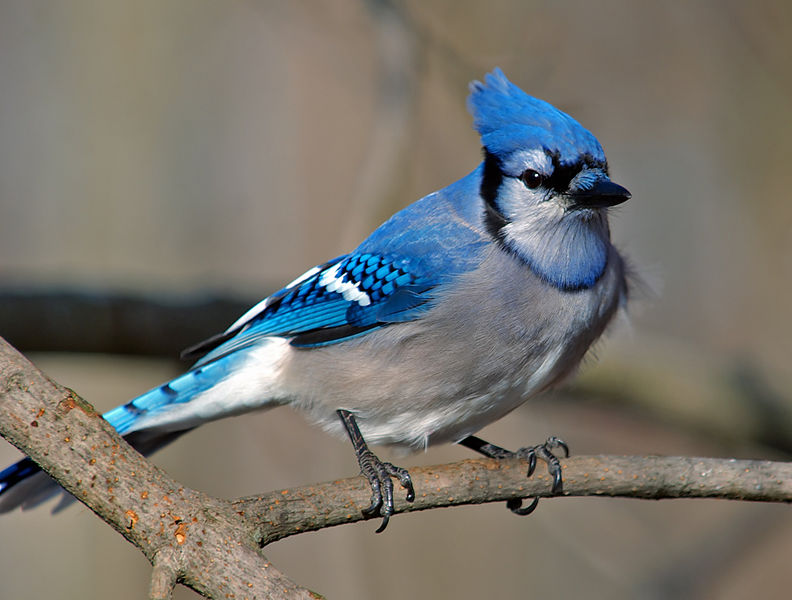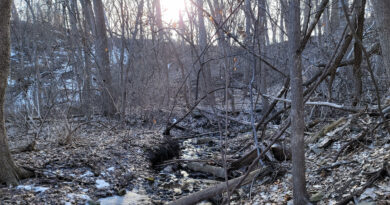Birds in Particular
The Whisper of the Blue Jay and Moon Watching
by Halle O’Falvey
As I walked throughout the month of November, I saw blue jays everywhere. Occasionally, even in my back yard, but mostly in the cemeteries of St. Paul during sunset. The added benefit of the cemeteries is that I can look for my relatives. As a fourth generation St. Paulite, and of Irish Catholic decent, there are many. I am fortunate to have many photographs of my ancestors. They have many stories to tell.
Despite the blue jays’ prevalence, I have never heard one whisper song. It is sung mostly during courtship, so I have settled for YouTube videos. (allaboutbirds.org, audubon.org, birdnote.org.)
Blue jays are a commentative bunch: loud and clear, squawking and calling out to the relatives. They recognize each other by their distinctive black neck and face markings. Not one is the same.
Of course, we have our resident birds like the cardinals and crows, but we do get our winter migrants from the North. Be on the lookout for evening grosbeaks—the adult males are yellow, white and black. There is an irruption* this year of 2020 because of their food source; the spruce budworm larvae. The “Bird Chick,” Sharon Stiteler, describes them as looking like a goldfinch’s on steroids, with a unibrow. The unibrow is yellow.
For sunset walks other than cemeteries, find a high unobstructed view. We have many: Mounds Park, Frogtown Farm (the highest spot in St. Paul), Cherokee Park, the Highbridge, the 35-E bridge over the Mississippi off Shepard Road, Two Rivers Overlook and most everywhere along Mississippi River Blvd. I usually walk at least thirty minutes before sunset and stay for 30 minutes after sunset for the full show.
And for my monthly joke: What kind of bird works at a construction site? A crane of course!
I was going to suggest participating in the 121st annual Christmas Bird Count this year. There are six different circles in the Twin Cities with compilers and community scientists. But because of COVID-19, it is not safe. So instead, I encourage you to do a bird count in your yard or in another safe place you like to spend outside. Make a journal, count the birds you see and hear in a day. Or you could do some moon watching and log the moonrise and the moonset, including the moon phases. We’ve got a waxing crescent moonrise today of 35 percent that was at 12:47 pm. Saturn and Jupiter are visible to the naked eye too. You can get a free star map from the Bell Museum (www.bellmuseum.umn.edu/).
*Merriam-Webster: irruption noun ir-rup-tion c ecology : a sudden sharp increase in the relative numbers of a natural population usually with favorable alteration of the environment.
Feel free to contact me at halleofalvey@gmail.com.




